If you or your child have crooked, gappy or misaligned teeth, you may be wondering, how old do you have to be to get braces? It is a common assumption that dental braces are just worn by children and teenagers. This may have been true in the past, but nowadays anyone can have orthodontic treatment.
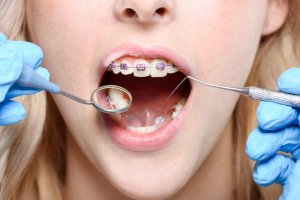
It is important to know that it is never too late to benefit from orthodontics, but what is the best age to get straight teeth? This article will discuss the best time to get braces and more, including:
- Signs you or your child need orthodontic treatment
- How do braces work?
- Braces at different age ranges
- Is there an age limit for braces?
There isn’t just one suitable age to straighten your teeth, although many orthodontists will tell you that 7 years old is the ideal age to have your teeth assessed. However, that doesn’t mean it’s the best age for braces, only that it is a good time to see if potential future problems can be avoided.
But, before we jump in with when to get braces, let’s start with who needs them.
In This Article
Signs that you or your child need orthodontic treatment
A child’s mouth can change quite a bit in their early years, as they lose their baby teeth and their jaws are growing. But by the time they are 7 years old, it should become more clear if they need orthodontic treatment. This is why it is a good age to get them assessed by a dentist or orthodontist.
Most orthodontic issues are quite prominent and easy to recognise. Some of the signs that you or your child may need corrective treatment include:
- Protruding teeth
- Crowded teeth
- Gaps between teeth
- Misalignment
- Trouble eating
- Difficulty speaking
- Mouth breathing
If you notice any of these issues, it might be time to schedule an appointment with your dentist or orthodontist. They will be able to assess your child’s teeth, or your own, to discuss the different options and make a treatment plan.
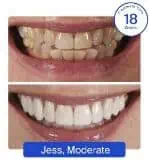
- Treats up to 90% of Cases
- Up to 40% cheaper than Invisalign
- Buy now, pay later in interest-free instalments
- Rated 4.9/5 on Trustpilot
- As seen on 5, BBC, 4, DailyExpress, TheMail
- Get 5% OFF with our discount code DENTALY5OFF and FREE Whitening and Retainers worth £790
How do braces work?
To understand the best age to get braces, it helps to know how they work first. There are a few different styles of braces that all work by using pressure to align your teeth. But that’s where the similarities stop.
The 2 main types of braces are fixed braces and removable braces.
Fixed braces
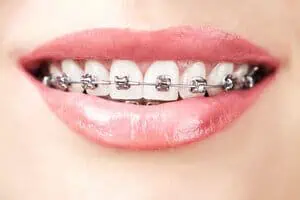
Fixed braces all work similarly to the traditional train track braces. They include the following types:
- Metal braces
- Ceramic braces
- Lingual braces
- Self-ligating braces
These types all work with a system of brackets, wires and rubber bands (with the exception of self-ligating brackets that don’t require rubber bands).
The brackets are attached to the teeth with dental cement and connected by archwires. These wires are then either secured by rubber bands or self-ligating brackets.
The flexible archwires put pressure on the teeth, slowly guiding them into the desired position. Every 2 weeks, your dentist will make adjustments to the wires to maintain pressure and ensure your teeth are moving in the correct direction.
These braces are suitable for more severe orthodontic problems, and in some cases more affordable than removable types.
Removable Braces
Removable braces are different to fixed ones because, as their name suggests, they are removable, and use a different system to straighten your teeth. Removable braces include clear aligners and invisible braces such as Invisalign.
They are custom-made, clear, plastic trays that snugly fit over your teeth, applying pressure and gradually aligning your teeth and smile into the desired position. Every 2 weeks you change to a new set of plastic trays to continue your treatment.
Clear aligners are much less noticeable than fixed braces, so are a good choice for patients concerned with their appearance. Unfortunately, most clear aligners are only suitable for mild to moderate treatment. Read more about the best teeth aligner treatment options available.
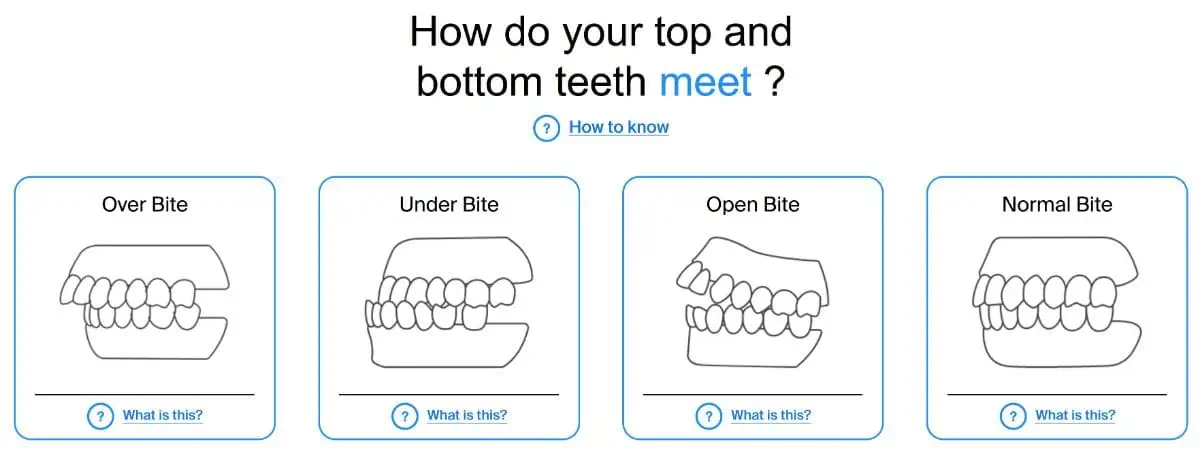
What is the best age to get braces?
If you have crooked or misaligned teeth, don’t worry, you can have orthodontic treatment at any almost age. You will never be considered too old to benefit from orthodontics. Many people in their 40s, 50s, or even older have successfully completed orthodontic treatment.
The ideal age for braces, according to the NHS, is between the ages of 12 and 13 when children’s mouths and jaws are still growing. Once you reach adulthood, your teeth are more set and take longer to correct.
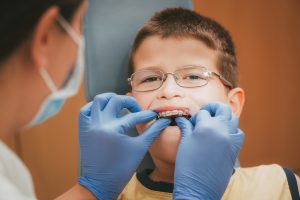
However, the ideal age may not be the right time for your child. There are other factors that may influence when the best time to get braces is. Your dentist will make an assessment of your teeth, jaws, bite and oral health and make a plan.
Sometimes your child will need corrective treatment with orthodontic appliances like twin blocks before they can get braces. In other cases, the dentist may suggest waiting a few years, or you may need other dental work beforehand.
Your oral health needs to be in good condition, and your dentist may ask you to make adjustments to your dental routine to improve the health of your gums first.
If you have noticed signs that you or your child may need braces, then make an appointment with your dentist to discuss the right time for orthodontic treatment.
Is there an age limit for braces?
There is no upper age limit to get braces, but if you are older, your braces treatment time may take longer than if you were a child. When the jaw and bite are still growing and changing in shape and position, the teeth and bit are more easily guided into a better position. Children’s mouths are also more malleable, so their teeth move a little quicker than adults.
That being said, an adult is more likely to adhere to their dentist’s instructions, and take better care of their oral health.
However, people with crowns, implants, missing teeth or gum disease may not be good candidates for braces. And since these things are more likely to occur as we get older, this may reduce the chances of an older adult being suitable for orthodontic treatment.
The following video discusses whether it is best to get braces as a child, or as an adult, and if it is too late to get treatment once you are an adult.
Braces at different age ranges
Children and early teens
As a general rule, orthodontic treatment is done once all of the baby teeth have fallen out and the adult teeth have come through. But, in some cases, corrective treatment may be used to make space for the permanent teeth coming in.
Children getting orthodontics at a very young age are usually those needing their bites corrected to prevent future problems like difficulty eating and speaking.
Teenagers and young adults
Most patients will get orthodontic treatment when they are in their early teens. This is the recommended age, and children up to the age of 18 can get their braces free with the NHS. However, they will only provide orthodontic treatment is if is medically necessary.
If you think that your teenager needs their teeth straightened, but they don’t meet NHS criteria, they will have to get private treatment.
Adults
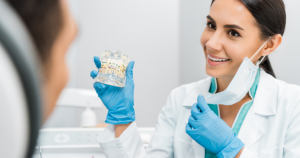
In the past, it was much less common for adults to wear braces, but it is becoming more popular in recent times.
Generally, adults get orthodontic treatment because they were unable to when they were younger, for one reason or another, or because they failed to wear a retainer after orthodontic treatment as a child and their teeth moved back to their pre-treatment positions.
Sometimes it is just for aesthetic reasons, but other times it is to resolve an orthodontic issue that is becoming worse with age.
Whatever the reason, modern advances in technology have allowed adults to wear braces that are much less noticeable than traditional ones. Many adults opt for invisible braces like Invisalign that fit in with their lifestyle and are almost unnoticeable to wear.
Although almost anyone can benefit from orthodontics, as we mentioned before there may be some reasons you are not eligible such as gum disease, crowns and implants.
Conclusion
Braces are suitable for any age, and there is no upper age limit if you are eligible for treatment. However, the ideal age is around 12 to 13 years of age according to the NHS. This is because all of the permanent teeth are likely to have come through, but the jaw and mouth are still growing and settling into position.
If your child needs early orthodontic treatment, due to difficulty eating or speaking or other factors, your dentist will be able to make an assessment and orthodontic plan. They may also need to have other dental work or treatment with orthodontic appliances to improve their bite before they can wear braces.
Adults can benefit from orthodontics at any age, but their treatment may take a little longer. And some adults may find they are not eligible if they have any gum disease or any previous dental work that means they can’t have braces.
With recent advances in technology, those eligible for orthodontic treatment can choose braces that fit in with their lifestyle and are less noticeable. This means that more adults are getting treatment because they can choose braces that have less of an effect on their appearance.
If you think you or your child needs orthodontic treatment, don’t hesitate to make an appointment with your dentist or orthodontist to discuss treatment.
NHS. Braces and Orthodontics. Consulted 27th September 2021.




